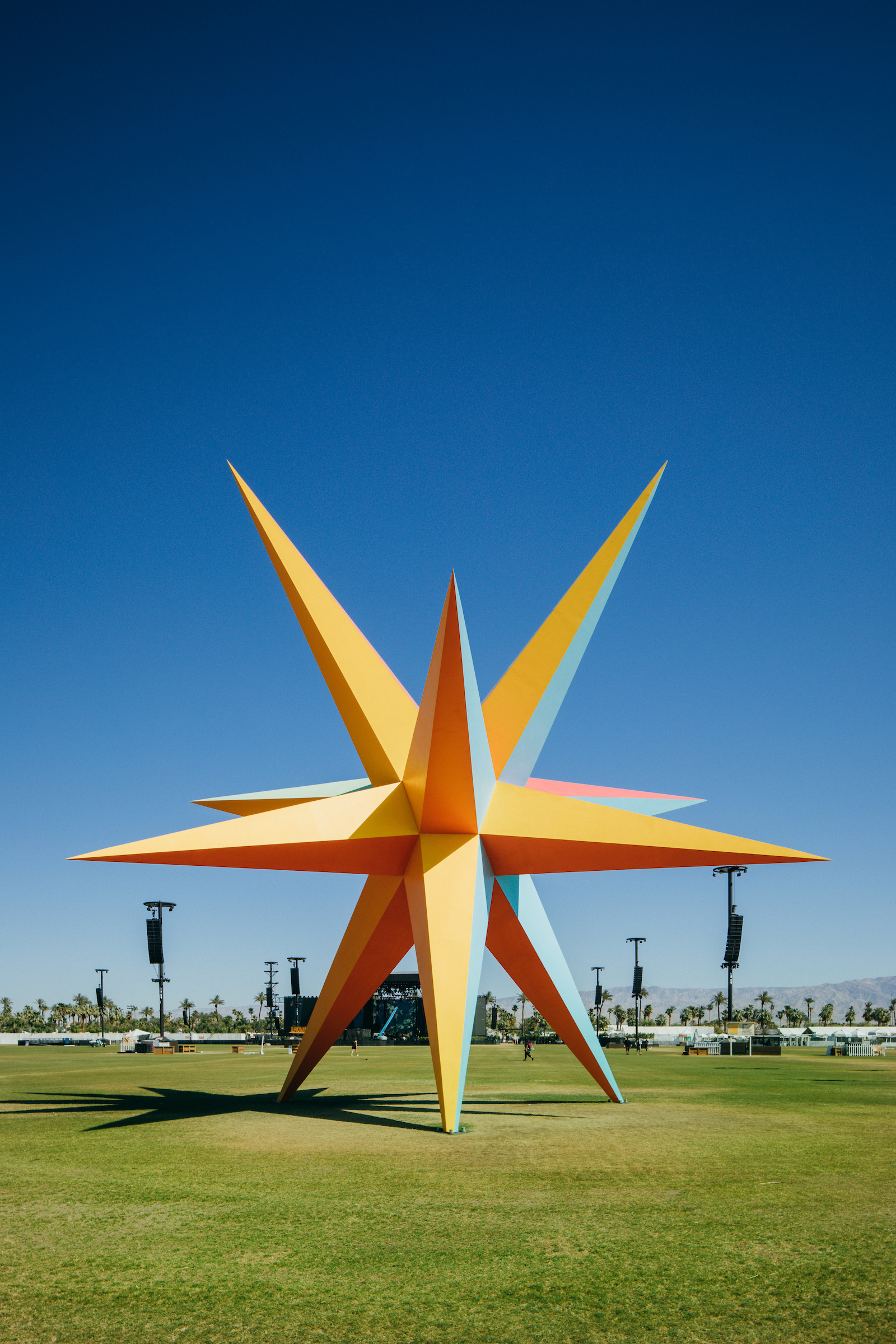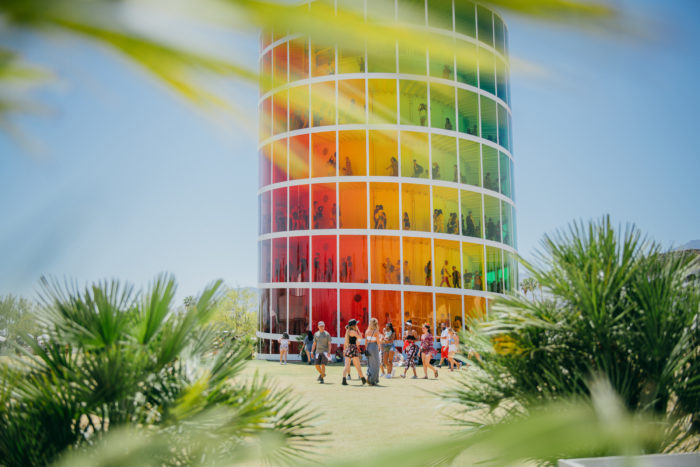
When Pearl Jam staged a concert at the Empire Polo Club on November 5, 1993, the band was simply looking for a space to perform that was out of Ticketmaster’s long reach—so they had to go all the way out to the 300-acre grounds in Indio, California. Protesting the distribution company’s spike in ticket charges and monopoly over nearly major venue in the country, they played for a swollen crowd of 25,000 fans that night. Though the band’s revolt lasted for a single night, it was the first rock concert staged on the grounds—and inadvertently designated it as a haven for experiencing the teenage thrill of live music and sublime, pop-up dreamlands. Though grunge bands slipped from top billing a quick few years later, the Club hosted the first Coachella Valley Music & Arts Festival in 1999, and has been home to the festival ever since.
Turns out the Colorado Desert, home to the state’s only native palm tree, the Washingtonia filifera, or desert fan palm, is pretty hospitable to cultivating other rare phenomena correlated with southern California visual culture: besides the iconic palm tree; the now-annual endless scroll of flower crowns, cutoffs, and crop tops takes over pretty much every April feed. Next February, the second edition of Desert X, this time curated by Neville Wakefield, Amanda Hunt, and Matthew Schum, populates the Valley with large-scale installations and performances. And 40 miles west, Palm Springs preserves the highest concentration of midcentury modern architectural gems, embodying the most glamorous models of postwar optimism, and designs by Albert Frey and John Lautner dot the dusty landscape. An even craggier 30 miles further east, in the Mojave Desert, Joshua Tree National Park’s 100-million-year-old psychedelic rock formations are best reveled in during the sherbet-gradient twilight hours.

At least this month, performances by Beyoncé, Cardi B, and David Byrne was likely what moved 125,000 tickets each weekend (both sets were sold out within hours of their January release) and populated the desert roads. Coachella has also served as a platform for multimedia art installations over the past several years, with past commissions including Philip K Smith III, Jimenez Lai of Bureau Spectacular, and the Haas Brothers. This year, NEWSUBSTANCE, a UK design studio, created SPECTRA, a kaleidoscopic rainbow tower swirling seven stories high. The group, whose past projects include performance stages for headliner Beyoncé in Egypt and Take That’s 2011 tour and the closing ceremony of the Dubai World Cup, led visitors up a dizzying ramp lined with 31 colored panels and 6,000 LED lights—a 360-degree gel filter.
Nearby, returning Coachella artists Roberto Behar and Rosario Marquardt of R&R Studios presented SUPERNOVA, an 80-foot-high, 12-pointed star, each plane painted in hues of apricot, strawberry, or lemon, grass, or cornflower. The “guiding star” offered orientation and rare shade in the relentless sun. Katie Stout pushed her designs of playful, absurdist furniture and objects a dimension further, drawing her water fountain Display the Oasis in augmented reality. Visible only through the Coachella app, the installation became animated after pointing a phone camera onto the target image embedded in a large painting resting on an easel in the middle of an isolated patch of grass. Works by Randy Polumbo, Edoardo Tresoldi, Simón Vega, and Adam Ferriss rounded out the offerings on the field; like the other projects on view, the multicolored, hallucinatory, moving forms and colors floated as easily as a heat wave.
The 2018 Coachella Valley Music & Arts Festival ran April 13 to 22. Upcoming highlights in the area include Desert Daze, running October 12–14; Palm Springs Modernism Week Fall Preview, running October 18–21, and Desert X, opening February 9, 2019.




